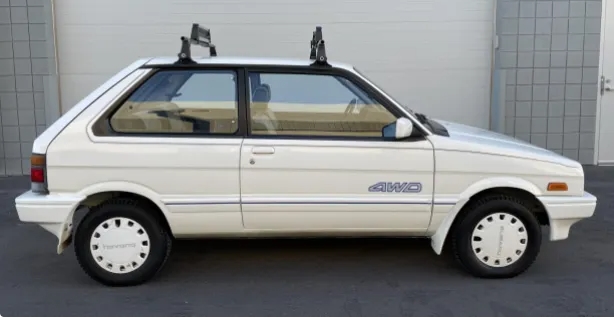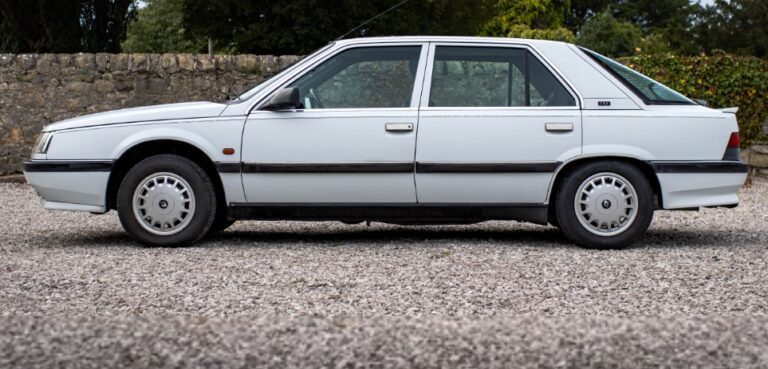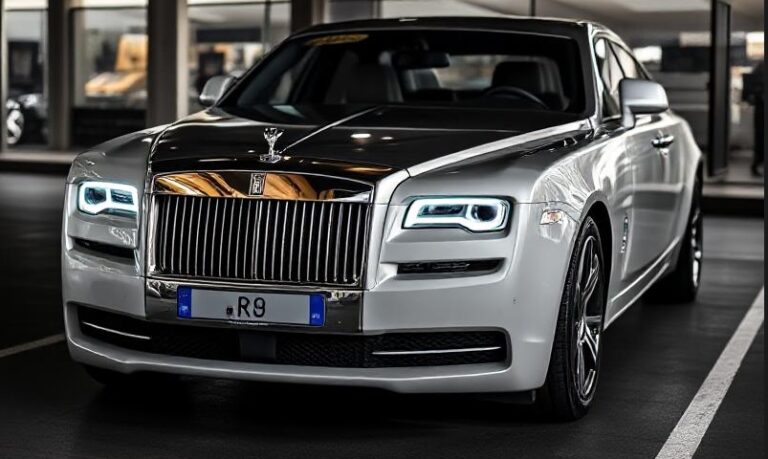The Uncrowned King: A History of the Infiniti Q45
In the late 1980s, the automotive world was on the cusp of a revolution. Japan’s “Bubble Economy” had fueled unprecedented engineering ambition, and its automakers, having conquered the mainstream market, set their sights on the lucrative luxury segment dominated by German and American titans. In 1989, Toyota launched Lexus with its impeccably engineered LS 400. Honda had already tested the waters with Acura. Nissan’s answer, unveiled in the same year, was Infiniti, and its flagship was a machine designed not merely to compete, but to challenge the very definition of a luxury sedan: the Q45.
The Infiniti Q45 was never the sales leader its rival, the Lexus LS, became. Yet, across its three distinct generations, it carved out a unique legacy as a driver’s car, a technological powerhouse, and an icon of Japanese minimalist design. This is the story of its evolution, a tale of audacious beginnings, a conformist middle age, and a powerfully defiant end.
First Generation (G50): The Zen Warrior (1990-1996)
When the first Infiniti Q45 debuted for the 1990 model year, it was a profound statement. Based on the exclusive Japanese Domestic Market (JDM) Nissan President, the Q45 eschewed the traditional luxury cues of its time. While competitors were slathering their dashboards in polished burled walnut and adorning their hoods with chrome ornaments, Infiniti went in the opposite direction. The initial Q45 marketing campaign was famously abstract, featuring images of nature and rocks with the tagline, “We are Infiniti,” but showing little of the car itself. This was a car for a different kind of luxury buyer—one who valued substance over symbol.
The Q45’s exterior was clean, muscular, and devoid of clutter. Its most controversial feature was the front grille, which wasn’t a grille at all. It was a simple, unadorned panel bearing a stylized badge inspired by a Kabuki theater mask, a detail often referred to as the “belt buckle.” Inside, the theme continued. The cabin was swathed in high-quality leather and featured an elegant, uncluttered dash. Early models deliberately avoided wood trim, a decision that baffled traditional luxury buyers but reinforced the car’s minimalist, driver-focused ethos.
Beneath this serene exterior beat the heart of a beast. The G50 Q45 was powered by the legendary VH45DE engine, a technologically advanced 4.5-liter, DOHC, 32-valve V8. It produced a formidable 278 horsepower and 292 lb-ft of torque, numbers that put it at the very top of its class. Mated to a responsive four-speed automatic transmission, this engine propelled the large sedan from 0-60 mph in under seven seconds, making it one of the fastest four-door cars in the world at the time.
.
THIS could come in handy for your auto garage (and everywhere else!):

.
Models and Trim Levels (1990-1996):
- Q45 (Base): The standard model was anything but basic. It came equipped with a full leather interior, a Bose sound system, automatic climate control, a power moonroof, and full power accessories for the seats, windows, and mirrors. Standard four-wheel anti-lock disc brakes and a viscous limited-slip differential underscored its performance credentials.
- Q45t (Touring): Introduced in 1991, the “t” model was for the enthusiast. It added a subtle trunk-lid spoiler, forged BBS multi-spoke alloy wheels, and, most importantly, Nissan’s Super HICAS (High Capacity Actively Controlled Steering) four-wheel steering system. This system could steer the rear wheels slightly to improve high-speed stability and low-speed maneuverability, enhancing the Q45’s already impressive handling.
- Q45a (Active Suspension): The rarest and most technologically advanced model, the Q45a, was available from 1991. It featured a revolutionary “Full-Active Suspension” system. Unlike adaptive suspensions that simply adjusted damper firmness, this was a fully hydraulic system that used 10 sensors and a trio of computers to actively counteract body roll, squat, and dive. It aimed to keep the car perfectly level under all conditions, providing an unparalleled combination of a plush ride and flat cornering. The system was incredibly complex, expensive, and added significant weight, making the Q45a a rare sight.
In response to market feedback and criticism from dealers, Infiniti began to soften the Q45’s austere image. For the 1994 model year, the car received a significant mid-cycle refresh. The controversial buckle was replaced with a more conventional chrome grille, wood trim was finally added to the interior, and the instrument cluster was redesigned. The engine also received minor updates, but the car’s fundamental character remained until its discontinuation in 1996.
Second Generation (Y33): The Conformist (1997-2001)
If the first-generation Q45 was a daring rebel, the second generation was a calculated course correction. Aiming to broaden its appeal, Infiniti designed the Y33 Q45 to be a more conventional, comfort-oriented luxury sedan. Based on the JDM Nissan Cima platform (a step down from the President), the new model was softer in its styling and its driving dynamics.
The exterior design was more rounded and less aggressive, with traditional chrome accents and a prominent grille. The interior was a direct response to the critics of the original, filled with wood trim, gathered leather upholstery, and an analog clock in the center stack—a clear nod to its rivals. It was undeniably more luxurious in the traditional sense, but some argued it had lost the unique spirit of its predecessor.
The most significant change was under the hood. The mighty VH45DE was retired in favor of the VH41DE, a smaller 4.1-liter V8. Power dropped to 266 horsepower and 278 lb-ft of torque. While still a smooth and capable engine, it lacked the ferocious character of the original 4.5-liter unit. The focus had shifted from outright performance to serene, effortless cruising.
Models and Trim Levels (1997-2001):
- Q45 (Base): The standard model continued to offer a high level of luxury features, including a multi-link front and rear suspension, vehicle speed-sensitive power steering, and advanced safety features for the era.
- Q45t (Touring): The Touring model remained the sportiest option. It featured a firmer, electronically controlled suspension, five-spoke 17-inch alloy wheels, a rear spoiler, and performance-oriented tires. It was the clear choice for buyers who still wanted a semblance of the original Q45’s driving engagement.
- Anniversary Edition: To celebrate Infiniti’s 10th anniversary in 1999, a special package was offered. The Anniversary Edition Q45 included most of the Touring model’s features, special badging, and unique polished alloy wheels, bundling popular options into a commemorative trim.
The second-generation Q45 was a commercial success compared to the first, finding more buyers who appreciated its blend of comfort, reliability, and traditional luxury. However, for brand purists and automotive journalists, it was a step back, a sign that Infiniti was perhaps losing the audacious vision that had defined its launch.
Third Generation (F50): The Technocrat’s Return (2002-2006)
For its final act, the Q45 returned with a vengeance. The third-generation F50, launched for the 2002 model year, was a radical departure from its softened predecessor. It was a bold, imposing, and technologically saturated machine designed to reclaim its performance flagship status.
The styling was its most talked-about feature. Dominated by enormous, monolithic “Gatling-gun” headlamps—each housing seven individual High-Intensity Discharge (HID) projectors—the F50 had a presence that was impossible to ignore. Its large, titanium-colored grille and muscular proportions gave it an aggressive stance that was both futuristic and polarizing.
Inside, the F50 was a showcase of early 21st-century technology. It featured one of the industry’s first voice-activated control systems for audio, climate, and navigation. A large LCD screen dominated the center stack, which could display information from the brand’s new rear-view backup camera.
Most importantly, the performance was back. Powering the F50 was an all-new, state-of-the-art VK45DE engine. This 4.5-liter V8 produced an impressive 340 horsepower and 333 lb-ft of torque, channeled through a new five-speed automatic transmission with a manual shift mode. The new Q45 was blazingly fast, capable of a 0-60 mph sprint in the high five-second range, once again placing it among the performance elite.
Models and Trim Levels (2002-2006):
Infiniti simplified the trim structure for the final generation, moving to a single model with optional packages.
- Q45 (Luxury Model): The base car was comprehensively equipped with 17-inch wheels, a Bose 8-speaker audio system, power everything, and the signature HID headlamps.
- Premium Package: This was the de facto top-tier model and the true successor to the “t” and “a” trims of the past. It bundled nearly every available feature, including:
- A sport-tuned suspension with electronically controlled shock absorbers (a simpler, more reliable take on the original active suspension).
- 18-inch, nine-spoke performance alloy wheels.
- Climate-controlled front seats (heated and cooled).
- Power-reclining and heated rear seats.
- Rear audio and climate controls.
- The industry’s first laser-based Intelligent Cruise Control, which could maintain a set distance from the car ahead.
Despite its incredible power and advanced technology, the third-generation Q45 struggled to find its footing. The luxury sedan market had become more crowded and competitive than ever. The car’s polarizing styling and the continued dominance of the Lexus LS and German sedans resulted in slow sales. After the 2006 model year, Infiniti quietly discontinued the Q45, with the V8-powered M45 (later the Q70) unofficially taking its place as the brand’s flagship sedan.
The Legacy of the Q45
The Infiniti Q45 was always more than just a car; it was a statement of intent. From the minimalist Zen warrior of the first generation to the technological titan of the last, it consistently offered a unique, performance-oriented alternative in a segment often defined by conservative luxury. It never achieved the sales figures of its main rival, but its impact is undeniable. The Q45 was the uncrowned king, a car for those who understood that true luxury wasn’t just about the badge on the grille, but about the thrill felt from behind the wheel.







